Decoding the Vocalization Patterns of Your Yellow Cockatiel
Unravel the intriguing language of Yellow Cockatiels as we decode their vocal patterns, shedding light on their complex communication and emotional expression.

Key Takeaways:
- Understand the unique vocalization patterns of yellow cockatiels and their significance.
- Learn to distinguish between the calls of male and female cockatiels.
- Gain insights into how vocalization affects the social behavior of these birds.
Yellow cockatiels, a vibrant member of the parrot family, are not only known for their bright yellow feathers and orange cheeks but also for their intriguing vocalization patterns. As a beautiful pet bird, the yellow cockatiel, which includes the gorgeous lutino cockatiel and other color mutations like the cinnamon cockatiel and female pearl cockatiel, has become a favorite among bird enthusiasts. This article will delve into the fascinating world of yellow cockatiel communication, exploring the nuances of their calls and what they signify.
The Yellow Cockatiel: An Overview
The yellow cockatiel, scientifically known as Nymphicus hollandicus, is the second cockatiel mutation discovered after the normal grey cockatiel. With their bright orange cheek patches and yellow crest, these birds are a sight to behold. The lutino gene is responsible for the yellow and white plumage seen in these birds, with variations such as the lutino pearl, lutino pied, and pied mutation adding to their allure. Originating from the aviculture world, these birds have made their way into the hearts and homes of many.
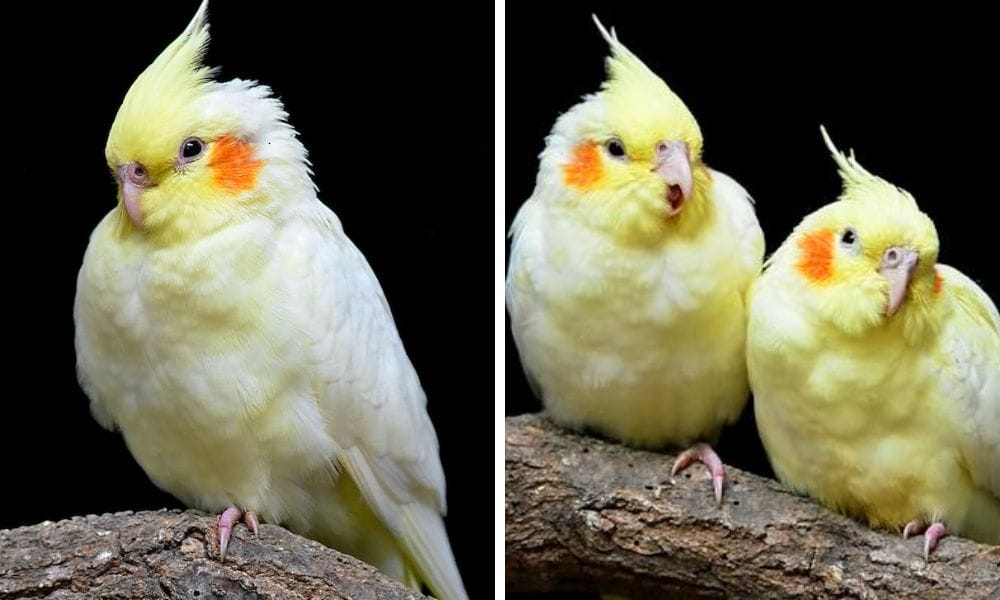
Vocalization: A Key Aspect of Cockatiel Communication
Vocalization in yellow cockatiels is not just about producing sound; it's a critical component of their social interaction. Whether it's the male lutino cockatiels or female pearl cockatiel, each bird has a distinct set of calls and songs. These sounds can convey a range of messages, from mating calls to alarms signaling danger. Understanding these patterns is essential for any cockatiel owner or enthusiast.
Male vs. Female: Distinct Vocal Differences
Male and female cockatiels exhibit different vocal behaviors. Male lutino cockatiels are known for their vocal prowess, often singing to attract females or assert their territory. On the other hand, female cockatiels, including the female pearl cockatiel, are generally quieter and less likely to initiate singing. Their calls are often shorter and serve specific purposes like calling their chicks or responding to a mate.
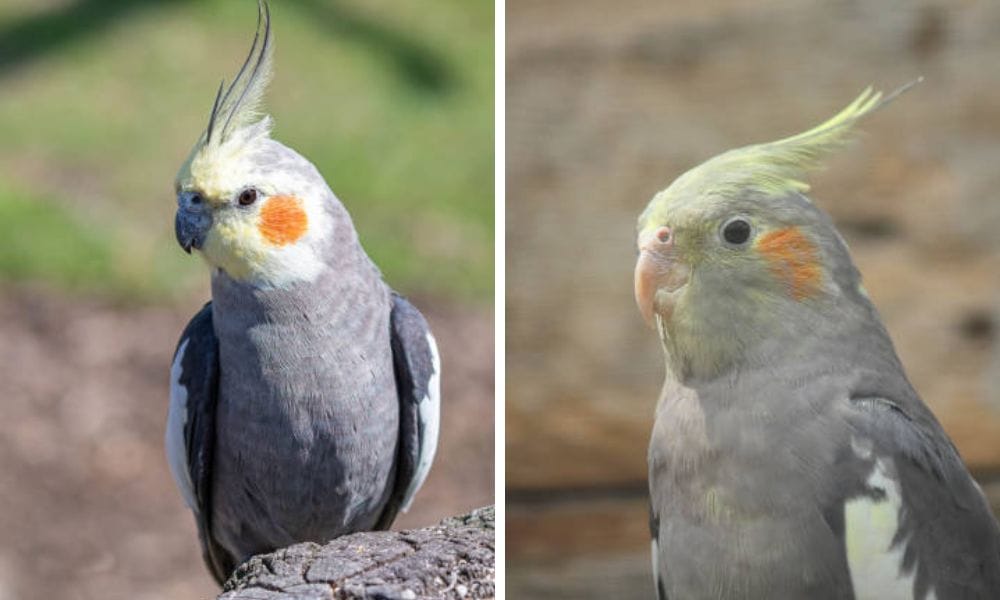
The Role of Vocalization in Mating
During the breeding season, vocalization plays a pivotal role. Male cockatiels, with their long tails and bright yellow feathers, will perform elaborate vocal displays to woo potential mates. The female pearl cockatiel, while less vocal, will respond selectively, choosing a mate based on the quality of his song and the display of his bright orange cheek patches and yellow head.
Social Interaction and Vocal Learning
Cockatiels are social birds, and their vocalizations are a means of maintaining flock dynamics. In the wild, these birds use calls to stay connected while foraging. In captivity, pet birds like the yellow cockatiel learn to communicate with their human companions. They can mimic sounds and even learn to talk cockatiels, showcasing their intelligence and adaptability.
Vocalization as a Sign of Well-being
A singing cockatiel is often a happy cockatiel. Vocalization can be an indicator of a bird's health and happiness. When a yellow cockatiel is one that sings frequently, it usually means they are content in their environment. Conversely, a sudden decrease in vocalization could signal stress or illness, prompting a closer look at their habitat or a visit to the vet.
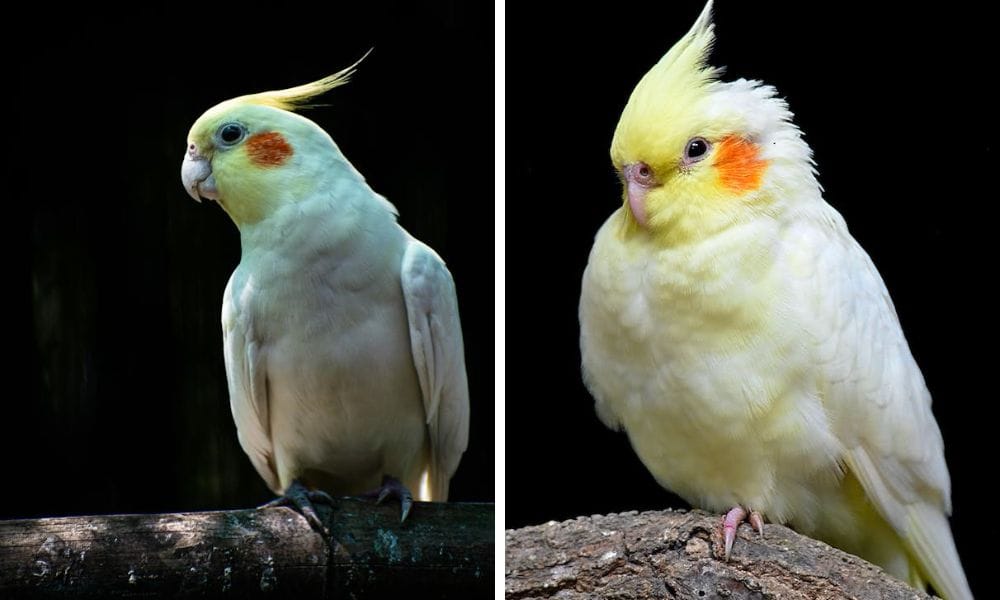
The Aesthetic Appeal of Cockatiel Plumage
Cockatiels are not only known for their vocal prowess but also for their striking appearance, which is a visual delight for bird enthusiasts. The orange cheek patch is a signature feature, particularly prominent in the male cockatiel. This vibrant splash of color contrasts beautifully with their light grey feathers and the white to light yellow facial feathers covering their cheeks. The cockatiel's plumage can vary significantly, with some birds boasting a yellowish tint throughout, while others display prominent white flashes on the outer edges of their tail feathers.
The lutino cockatiel is one variety that stands out with its yellow face and red eyes, a result of a genetic mutation that eliminates the grey color in their feathers, leaving a light yellow body. Another captivating breed is the pearl pied, which features a speckled pattern that gives the impression of a pearl necklace draped over their back and wings. These aesthetic nuances not only add to the cockatiel's charm but also play a role in their breeding and social dynamics, as the visual cues can be as important as vocal signals in their communication.
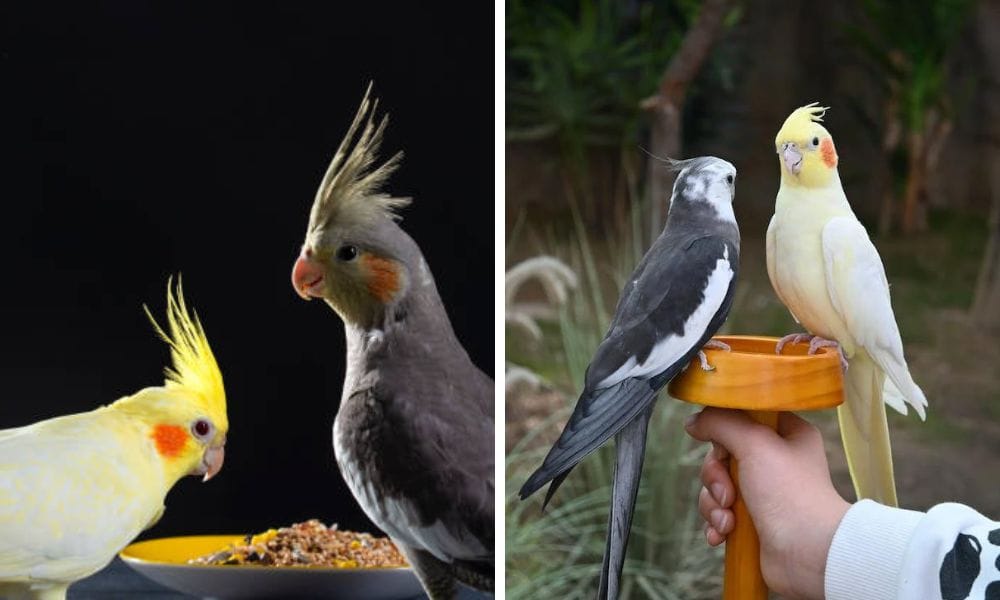
Cockatiel Varieties and Their Unique Traits
Exploring the diverse breeds of cockatiels reveals a fascinating array of traits that cater to the preferences of bird lovers and breeders alike. The albino cockatiel, devoid of any pigmentation, presents a pristine white appearance, while the blue cockatiel, though rarer, captivates with its unique hue. The beak of the cockatiel also varies, with some birds having a darker beak, while others may have a lighter one, often correlating with the overall color scheme of their plumage.
A visit to the Florida Parrot Jungle would allow enthusiasts to witness the splendor of these birds firsthand, where one might spot the work of Cliff Barringer, a renowned breeder who has contributed significantly to the understanding and propagation of various cockatiel breeds. The male cockatiel often sports more vivid and contrasting colors, which are especially noticeable during the mating season when they display their full glory to attract a mate. The facial feathers and tail feathers are not just for show; they also serve as indicators of health and vitality, making the understanding of these visual cues as important as their vocalizations.
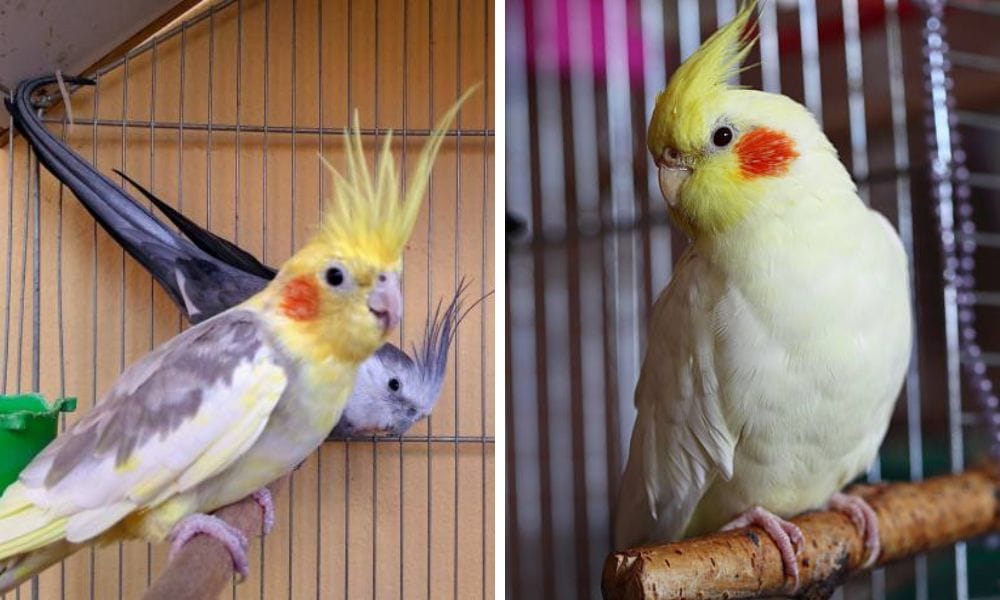
Recognizing Distress Calls
Cockatiels, including the lutino cockatiel and cinnamon cockatiel, will vocalize loudly when frightened or stressed. These distress calls are sharp and repetitive, serving as an alert to other birds or their human caretakers. Recognizing these calls is crucial for providing a safe and comfortable environment for your pet bird.
The Influence of Environment on Vocalization
The bird cage setup, including the presence of a nest box and the size of the cage, can affect a cockatiel's vocal behavior. A spacious cage with plenty of toys and perches encourages exploration and vocal play. Conversely, a cramped or barren cage can lead to stress and reduced vocalization.
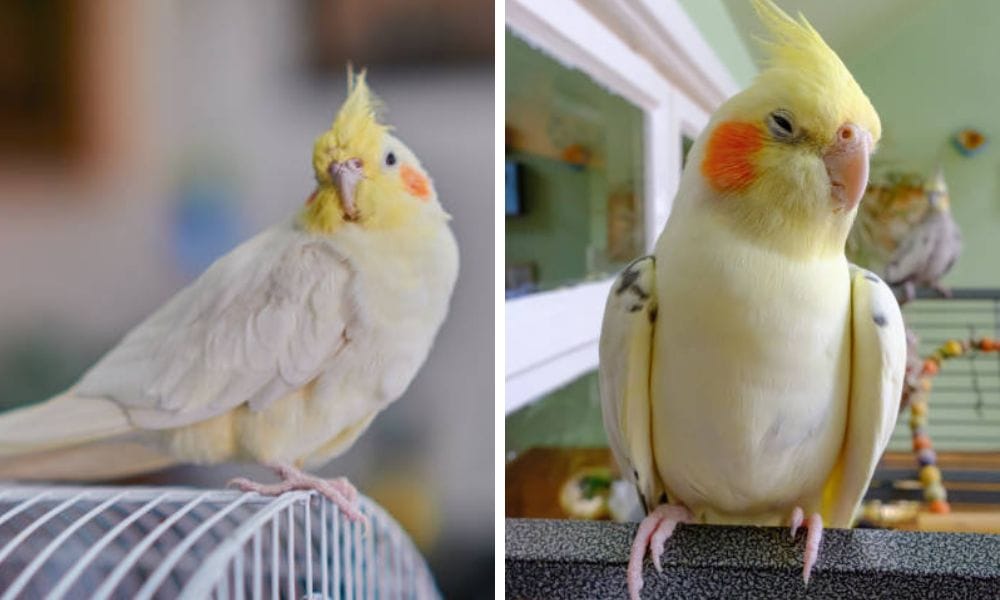
Training Cockatiels to Vocalize
Training a yellow cockatiel to vocalize involves patience and positive reinforcement. By rewarding your bird with treats or attention when they make desired sounds, you can encourage them to vocalize more often. This not only strengthens your bond with your pet but also enhances their cognitive abilities.
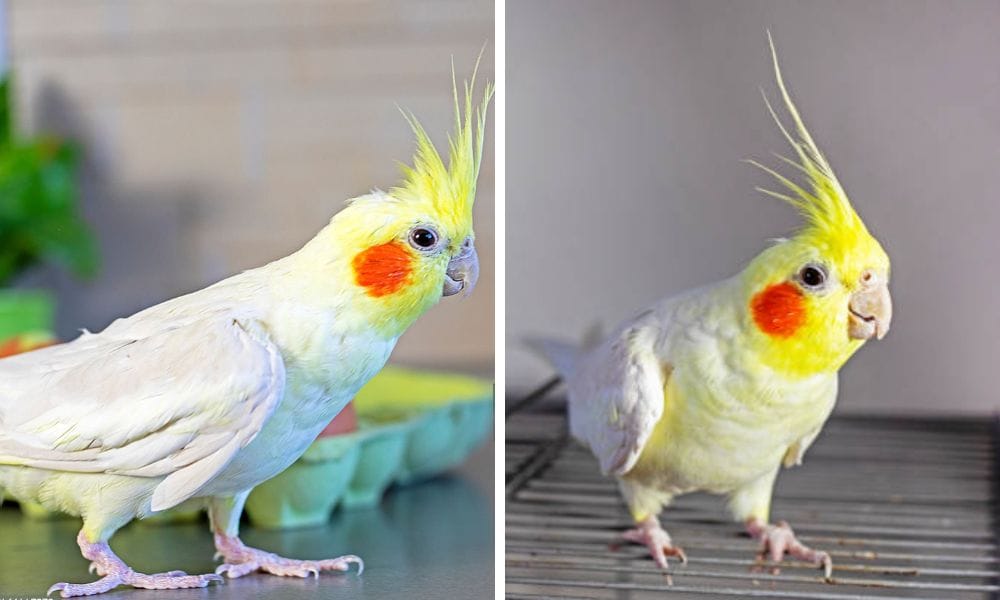
The Impact of Diet on Vocal Health
A balanced diet is essential for maintaining the vocal health of cockatiels. Foods rich in vitamins and minerals support the health of their vocal organs, ensuring that their calls remain clear and strong. A poor diet can lead to health issues that may affect a cockatiel's ability to vocalize effectively.
Deciphering the Meaning Behind the Melodies
Each cockatiel's song is unique, with variations in pitch, rhythm, and complexity. By spending time with your bird and observing their vocal patterns, you can begin to understand the meanings behind their melodies. Whether it's a happy chirp or a warning call, these sounds are a window into your cockatiel's emotions and needs.
The Evolution of Cockatiel Vocalization
The vocalization patterns of cockatiels have evolved to suit their environment and social structure. From the wild type with primarily grey plumage to the bright yellow lutino cockatiels, each mutation has developed its own vocal characteristics. This evolution highlights the adaptability of these birds and their ability to thrive in various settings.
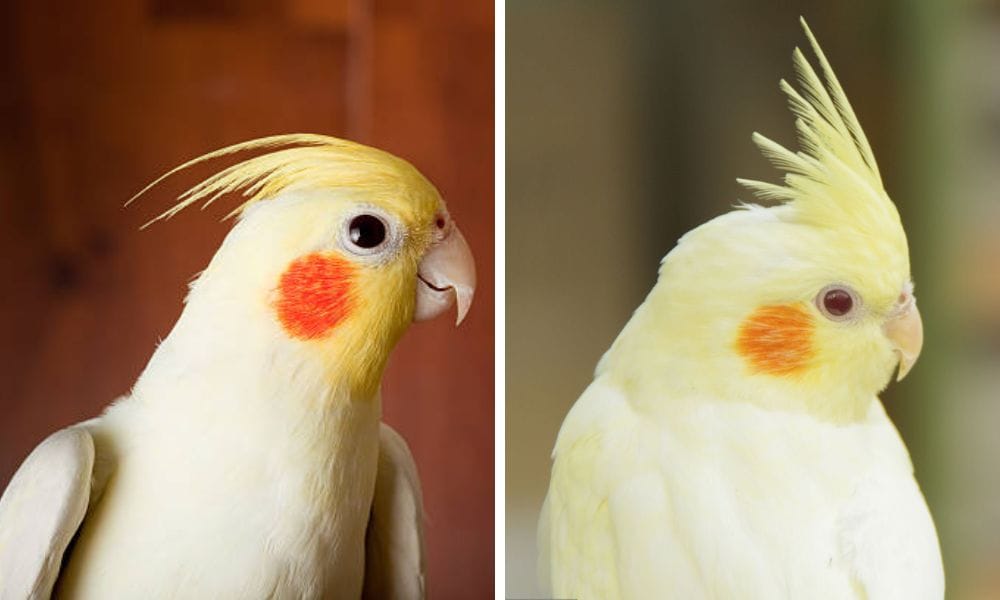
Summary
Yellow cockatiels, with their stunning yellow and white plumage and captivating vocal patterns, are a testament to the diversity and complexity of the animal world. From the male lutino cockatiels' serenades to the female pearl cockatiel's selective responses, these birds use vocalization as a tool for social interaction, mating, and expressing their well-being. Recognizing and understanding these vocal patterns can greatly enhance the bond between cockatiels and their owners, ensuring a harmonious coexistence. By providing a suitable environment, proper diet, and attentive care, cockatiel owners can enjoy the full range of vocal expressions these charming birds have to offer.
FAQ Section
Q: Can yellow cockatiels learn to mimic human speech? A: Yes, yellow cockatiels, like other parrots, have the ability to mimic sounds and, with patience and training, can learn to talk cockatiels and replicate human speech to some extent.
Q: How can I tell if my cockatiel's vocalization indicates happiness or stress? A: Happy cockatiels often sing and chirp with varied and melodious tones. In contrast, stress or distress is usually indicated by loud, sharp, and repetitive calls. Observing the context and frequency of vocalization can help determine your bird's emotional state.
Q: What should I do if my cockatiel stops vocalizing suddenly? A: A sudden decrease in vocalization could be a sign of illness or stress. It's important to assess their environment for any changes and consult a veterinarian to rule out any health issues.
